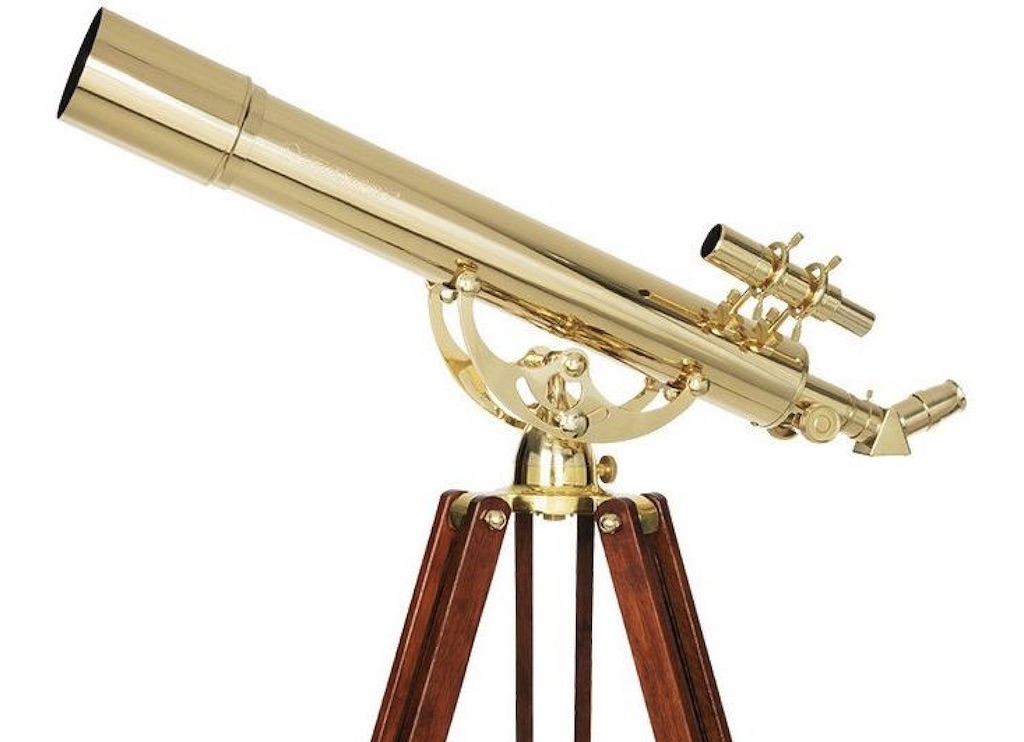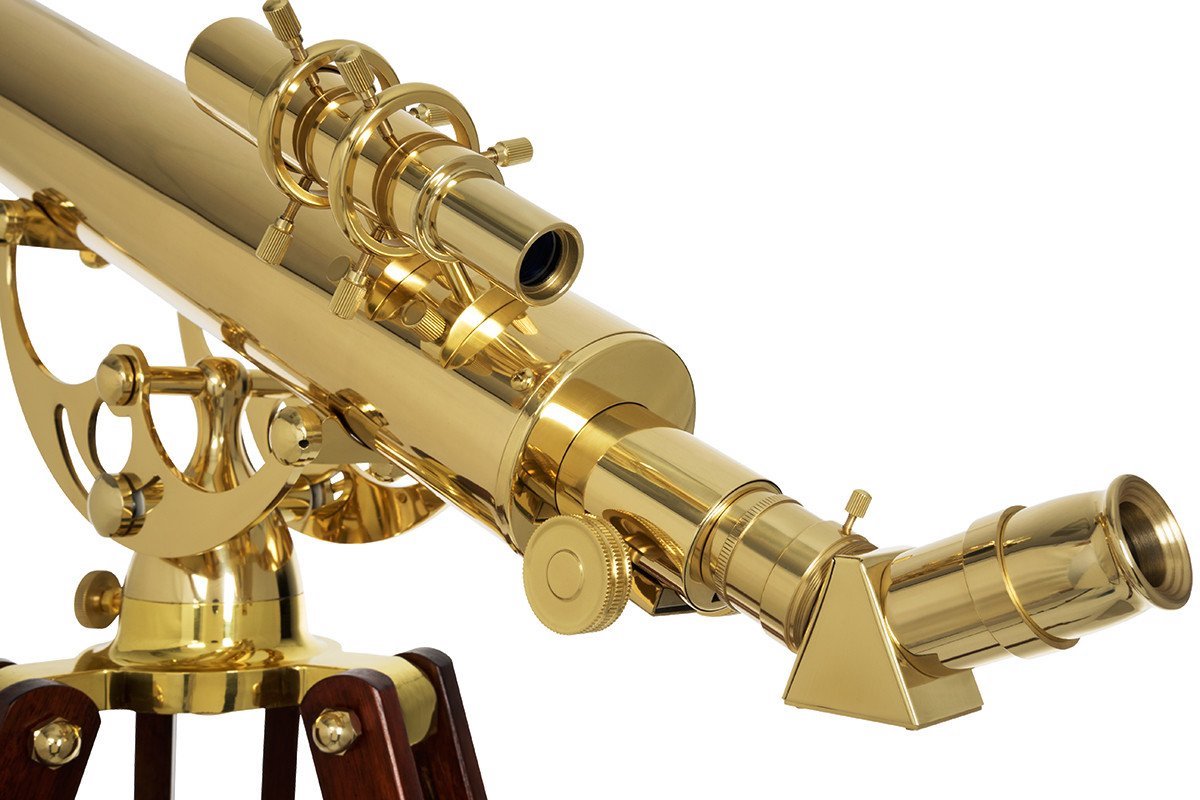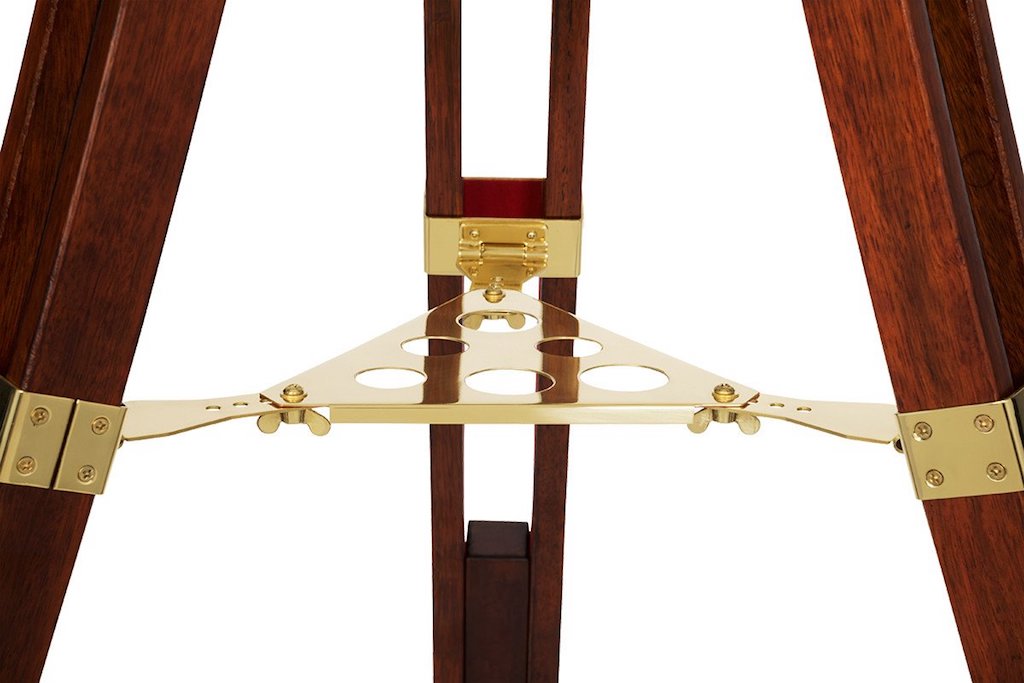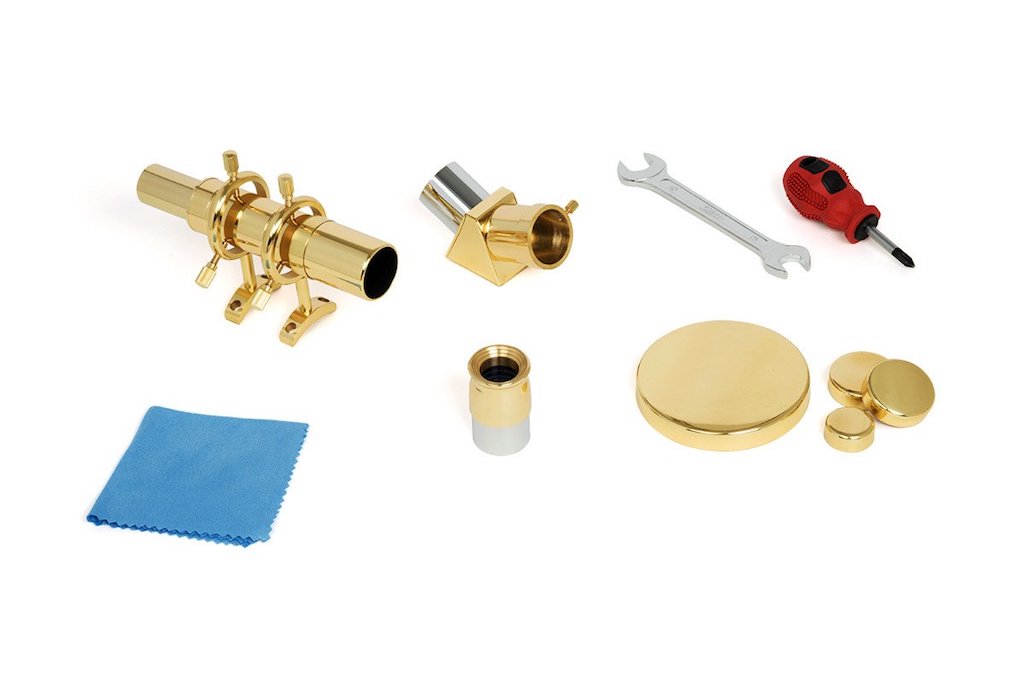Space Verdict
The Celestron Ambassador 80AZ's show-stopping brass design makes it a stunning ornamental piece for the home, while providing good and casual views of the solar system and bright deep-sky targets. This refractor comes with a few "on brand" accessories, finished to the same high-quality standard as the optical tube assembly. While the Ambassador 80AZ's versatilty means it and can be furnished with add-ons, its aperture doesn't carry a great deal of light-gathering capabilities compared to other telescopes in the same price range. Meanwhile, the brass shrinks in cold conditions, leaving the skywatcher having to carefully select when to use this beautifully crafted instrument.
Pros
- +
High-quality and unique design
- +
Good optical clarity and contrast
- +
Fair views of the solar system
- +
Sturdy mount
Cons
- -
Fiddly to set up
- -
Mount limits observations
- -
Blurry views at high magnifications
Why you can trust Space.com
Without a doubt, the Celestron Ambassador 80AZ is one of the most beautifully crafted telescopes we have had the chance to review — it's made almost entirely of brass, polished to a high finish and affixed to a mahogany tripod.
Due to the stunning appearance of the telescope, which also features a brass star diagonal, eyepiece barrel as well as brass-finished lens caps, it seems a shame to pack it away after use: if you have the room, the Celestron Ambassador 80AZ doubles up as an ornament for your home or office and is certainly a conversation starter.
In terms of add-ons, the Celestron Ambassador 80AZ is supplied with a 6x30 finderscope and a 0.98-inch (25 mm) eyepiece — both forged in brass — and can be accessorized further but skywatchers should be mindful that Celestron has not manufactured a full selection of eyepieces for this particular instrument.
The Ambassador 80AZ does feature a universal 1.25 eyepiece fitting, making it versatile for use with Celestron's extensive eyepiece range to help the optical system reach its useful magnifications of 189x and 11x and comes with a 2-year warranty.
Related: Best telescopes
Optical design: Refractor
Aperture: 3.15" (80 mm)
Focal length: 31" (800 mm)
Focal ratio: f/10
Eyepiece focal length: 25 mm (32x)
Total kit weight: 39.7 lbs. (18 kg)
Mount type: Alt-azimuth
Ambassador 80AZ: Design
- Beautiful, unusual brass design
- Overall set up is intuitive
- Fiddly use of washers and wing nuts
- Mount limits observations
Setting the Ambassador 80AZ up is nothing short of a breeze, however, we did take extra care in building the refractor given its more unconventional design. The tripod is sturdy, thanks to an accessory tray affixed securely to the legs using washers, wing nuts and machine screws.
Once we had set everything up and began moving the telescope out to the backyard, the Ambassador 80AZ became quite awkward to carry, forcing us to remove the accessory tray and only attach it to the tripod once we had reached an observing spot. At a weight of 39.7 lbs. (18 kilograms), the instrument offers good portability.
Due to the fiddly washers and wing nuts, this made setting up that little more time-consuming and we had to take special care in setting it up, especially as daylight began to fade. One thing to be mindful of is that once the tray is fitted, it can be a challenge to remove, so a degree of wiggling is required to loosen it when it's time to close the tripod legs.
Slewing the telescope across various sections of a dusk sky, we noted that its mount operated smoothly when moved along the altitude (up and down) axis but initially we discovered that it was very stiff until we loosened the nut on the underside of the mount head. Testing the movement of the mount is important during the construction of the Ambassador 80AZ.
Before we began our night of observations, we noted that the alt-azimuth mount makes it difficult to observe any higher than halfway up in the sky (about 45 degrees to the zenith). With our test unit, we were limited to what we could observe with this telescope, especially with the included 25 mm eyepiece.
Some telescopes employ a Crayford focuser to bring objects in the field of view into focus. The Ambassador 80AZ sharpens views of targets using a rack and pinion, which doesn't boast the accuracy of the Crayford and is often found on entry-level telescopes. Despite the simple mechanism, the operation is seamless and we were able to bring our daytime test objects — namely trees, birds and roof tiles — into focus with decent accuracy.




Ambassador 80AZ: First light and functionality
- Good views of the solar system
- Obvious false color in optics
- Pushing magnification too high causes blurring
- Mount is sturdy during observations
The moon at a first quarter phase with 53% illumination was an ideal target to observe with the Ambassador 80AZ. Views of the lunar seas such as Mare Crisium (Sea of Crises), Mare Fecunditatis (Sea of Fertility) and Mare Tranquillitatis (Sea of Tranquility) looked beautiful through the refractor, with very good resolution and high contrast.
Related: Moon phases
The craters stood out along the terminator — where night meets day on the lunar surface — and were of a high definition. In particular, Aristoteles, Janssen, Piccolomini and Theophilus caught the sun’s light very well and were a pleasure to observe through the field of view.
During our test, we noted the sturdiness of the mahogany wood tripod, which resisted any shaking as we brought lunar surface features into view during the shifting of the focuser. As with many refractors, we experienced a degree of false color, where a purple tint to the moon's limb was obvious despite the optical coating. Given that the aberration didn't ruin the view, we feel that the clarity and contrast outweigh the minor optical defects.
While the 1.25-inch eyepiece fitting offers versatility in terms of increasing the magnification of the telescope, we found that we had to be careful in how high we pushed the instrument to its magnification limit.
We recommend red dot finders for simple navigation of the night sky, especially if you're observing under less-than-perfect conditions. The 6x30 optical finderscope struggled to pick out faint stars, which made star-hopping a challenge. For functionality, a plastic finder would need to be attached to the telescope tube but no threads are on offer for this to be an easy solution.

Slotting a variety of Celestron-branded eyepieces into the fitting, it soon became evident that we are unable to reach the Ambassador 80AZ's highest useful magnification of 189x: views became blurred, compromising the quality of the field of view.
Being mindful of a restricted altitude of 45 degrees, Jupiter and Saturn were sufficiently low on the horizon, allowing us to test the telescope's optical system on targets with a smaller angular size.
We aren't disappointed with the view, despite the return of false color when we locked onto Jupiter, which dazzled at an impressive -2.6 magnitude. The 3.15-inch (80 mm) objective lens collects enough light for us to pick out the gas giant's atmospheric bands and Galilean moons Io, Europa, Callisto and Ganymede. Conditions were steady at the time of our observations but we do recommend accessorizing with filters — in particular dark blue — in order to pick out more details on the Jovian planet's tumultuous surface.
Views of Saturn are well-received through the Ambassador 80AZ's field of view, with the planet's disk and stunning ring system easy to detect. Again, planetary filters are a must for making the most of the ringed planet — we recommend blue and yellow to draw out Saturn's features.
Ambassador 80AZ: Verdict
The Celestron Ambassador 80AZ is ideal for casual observing, while serving as a beautiful ornamental piece for the home or office. The telescope promises to last for many observing sessions but only if used lightly. The telescope's mount cannot slew higher than 45 degrees in altitude, restricting skywatchers in what they can view at any given time
While the optics of this refractor are of good quality, promoting a high level of clarity and contrast, we wouldn’t recommend this telescope for those just starting out in their skywatching hobby. Despite the high-budget cost, the optical system doesn’t possess the light-gathering capabilities of instruments in the same price range — you're certainly paying for a beautifully crafted refractor over superior optical prowess with the Ambassador 80AZ.
The 1.25-inch eyepiece holder offers versatility in terms of increasing the magnification of the telescope, but skywatchers should be cautious when accessorizing the Ambassador 80AZ: views become blurred if the useful magnifications are not respected and even when attempting to reach the useful limits of 189x and 11x.
Since it's mainly comprised of brass, sufficiently low temperatures will cause the metal to shrink, so we advise being selective of when and where you use it — we recommend having a resilient telescope to hand if you’re looking to observe the night sky for hours and especially if you are looking to observe a variety of solar system and deep-sky targets.
Join our Space Forums to keep talking space on the latest missions, night sky and more! And if you have a news tip, correction or comment, let us know at: community@space.com.

Gemma currently works for the European Space Agency on content, communications and outreach, and was formerly the content director of Space.com, Live Science, science and space magazines How It Works and All About Space, history magazines All About History and History of War as well as Science, Technology, Engineering, Arts and Mathematics (STEAM) kids education brand Future Genius. She is the author of several books including "Quantum Physics in Minutes", "Haynes Owners’ Workshop Manual to the Large Hadron Collider" and "Haynes Owners’ Workshop Manual to the Milky Way". She holds a degree in physical sciences, a Master’s in astrophysics and a PhD in computational astrophysics. She was elected as a fellow of the Royal Astronomical Society in 2011. Previously, she worked for Nature's journal, Scientific Reports, and created scientific industry reports for the Institute of Physics and the British Antarctic Survey. She has covered stories and features for publications such as Physics World, Astronomy Now and Astrobiology Magazine.










